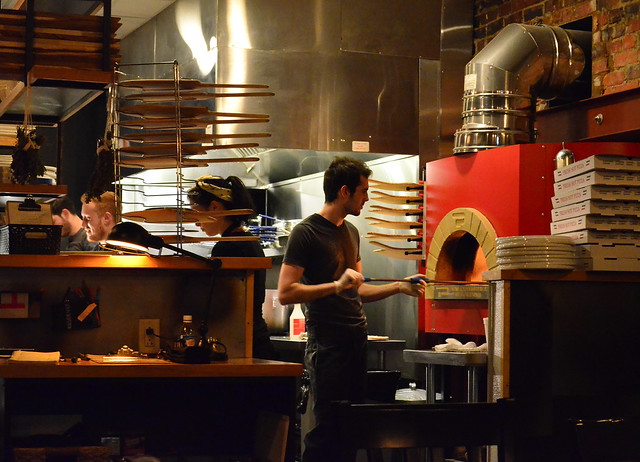David P. Cleary, chief of staff to Senator Lamar Alexander of Tennessee, has prepared a series of answers to questions I posed about the new "Every Student Succeeds Act." I am very grateful to have my questions answered by the staff of the Senator who led the reauthorization of No Child Left Behind. Instead of speculating about what the law says or means, we can get answers directly from those who drafted the law.
Readers, your comments are welcome, as always, but I ask you to be polite and civil. You may not like the law, but it is a darned sight better than NCLB, the Death Star of American education. It is now up to us as citizens to interact with our elected local and state officials to make the new law work to improve education.
David P. Cleary writes, to begin the discussion:
Diane:
Thank you for giving us the opportunity to engage with you and your readers about the Every Student Succeeds Act (ESSA). As with any new law, there are lots of questions that will take time to play out as the law is implemented both at the federal level and the state and local level.
Chairman Alexander plans vigorous oversight of the implementation of the law with hearings and regular meetings with the administration to ensure that the law is faithfully implemented. It is helpful to know what questions people have so we can work through hearings and oversight to ensure that the law is implemented as written.
One of the driving principles behind Chairman Alexander’s efforts to fix No Child Left Behind was to restore to states, school districts, classroom teachers and parents the responsibility for deciding what to do about improving student achievement. This will enable governors, chief state school officers, superintendents, principals, teachers, parents, students, advocates, and the public could grapple with these difficult issues and reach conclusions that work for their state and community.
Most importantly, the new law ends No Child Left Behind’s accountability system and also allows states to move in a different direction, if they choose, from many of the policies of No Child Left Behind and the waivers of the past several years.
In many ways, ESSA is just the beginning of the story because states will now need to figure out what to do with all of this new flexibility and responsibility.
Thanks again for this opportunity.
David
David P. Cleary
Chief of Staff/HELP Committee Staff Director
I will post my question and the response of Senator Alexander's staff every day for the next nine days.
The response:
1. How will ESSA affect testing? Most educators and parents believe that there is too much testing and they want less of it. What does ESSA do to reduce testing and the high stakes attached to it?
Short answer:
ESSA should significantly affect testing. Through testimony we learned that although the federally required math and reading tests provide valuable information on student learning to teachers, parents, states, and the public, many states and school districts administer many more tests than necessary, largely in part to prepare for the one-time high-stakes tests required under No Child Left Behind. State and school district leaders agree that shorter and fewer tests are needed. For example, we learned that a Fort Myers, Fla., school district gave its students more than 160 tests in preparation for the federal test[s] required under NCLB.
ESSA creates an opportunity for states to reevaluate the amount of tests their students take and how the results of those tests are used. While we kept the federal requirement that students take a total of 17 tests over a their 10 years of schooling from grades three through 12, we eliminated the federal requirement that determined whether a school is succeeding or failing based only, in effect, on federally-required tests. We also ended the waiver requirement for teacher evaluation linked to testing.
Moving forward, it will be up to states—as well as and governors, legislators, teachers, parents, and advocates–to decide whether to have more than the 17 federally required tests and how important those tests should be in determining whether schools are succeeding or failing. Additionally, the bill increases state flexibility around testing by allowing states to develop innovative assessment systems, such as competency based systems, in lieu of the existing state tests. ESSA also allows school districts to select a nationally recognized assessment, such as the SAT or ACT, that high schools can administer in lieu of the state math and reading test.
Long Answer:
The first issue Chairman Alexander tackled in 2015 was the question of overtesting due to No Child Left Behind. Our first hearing on January 21, 2015 looked at this issue and it feels like every conversation was dominated by the view that No Child Left Behind and the teacher evaluation mandate in the waivers created a massive proliferation of testing.
The requirement under NCLB was that states had to conduct annual tests in reading and math in grades three through eight and once in high school, and a science test in each of the grade spans three through five, six through eight, and nine through 12. That resulted in a federal requirement of 17 tests over a student’s 10 years spent in school from grades three through 12.
But the accountability system of NCLB was linked almost solely to the testing requirement. If student test scores didn’t meet federal requirements, federal sanctions were applied to the school in a one-size-fits all approach.
Seeing this issue, Sen. Alexander came to the conclusion that the federal requirement for testing wasn’t necessarily the problem, it was the accountability system that was attached to it.
With that in mind, we decided to focus on reducing the federally determined high stakes attached to the tests—creating an environment where states could reduce the extra tests they were administering and, most importantly, develop their own accountability system to judge whether schools and teachers were succeeding in educating students.
Through testimony we learned that states and school districts were creating and administering dozens or even hundreds of extra tests to ensure that they were on track for all students to perform well on the annual test required by the law and the teacher evaluation mandate in the waivers. This outcome is almost expected because the annual test became almost a death penalty moment for schools—if you didn’t perform according to the plan, you faced severe federal sanctions. NCLB became a “punish your way to success” accountability system.
In ESSA, states have much more freedom to determine whether a school is succeeding or failing. Tests do not have to be the only measure of performance.
A state has to include test results, graduation rates, English proficiency, and another measure of school quality or student success in its accountability system. If a state chooses, it could also include non-academic measures having nothing to do with tests.
But how much each of these indicators count in the accountability systems is up to the states, and the Secretary is prohibited from regulating precise numbers or even ranges of weights in section 1111(e)(1)(B)(iii)(IV) of the new law.
So now states have the flexibility and responsibility to determine how to establish an accountability system. What matters to Tennessee may differ from what matters to Minnesota. Some states may indeed keep all of their tests and the high stakes associated with them, while others will reduce testing and reduce the amount that tests count in accountability systems—but they key with ESSA is that it is entirely up to the states to decide what to do.


